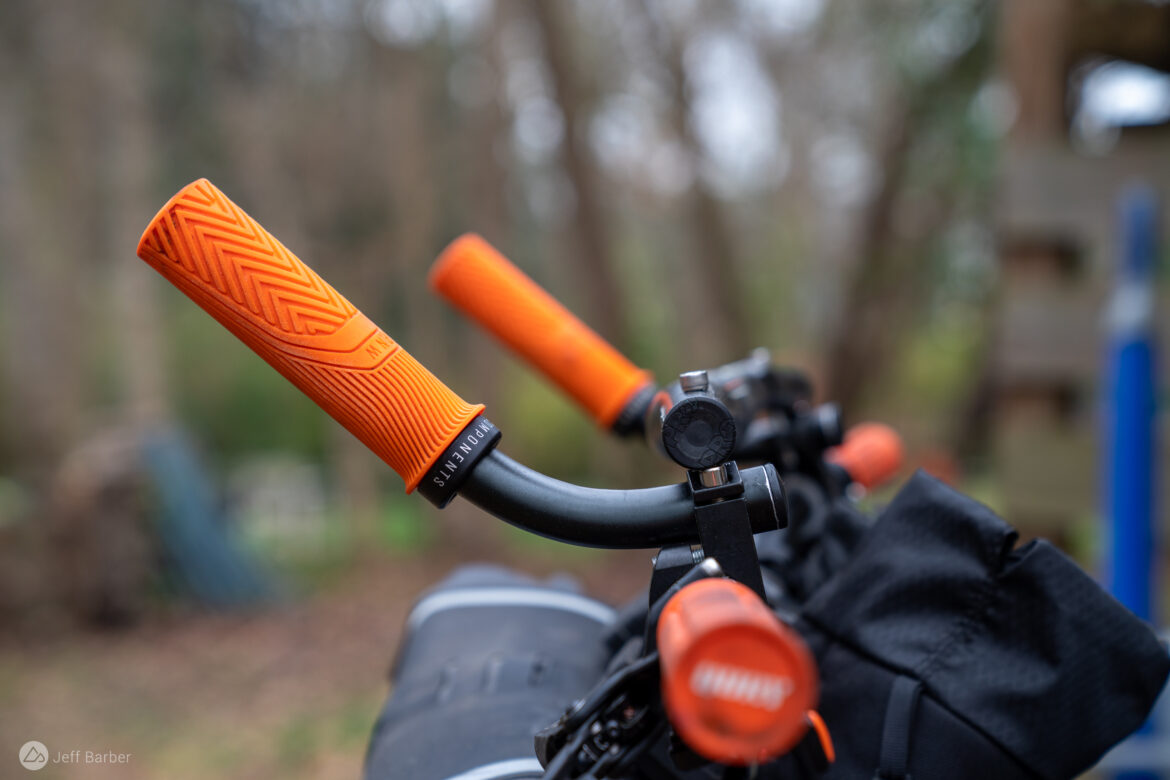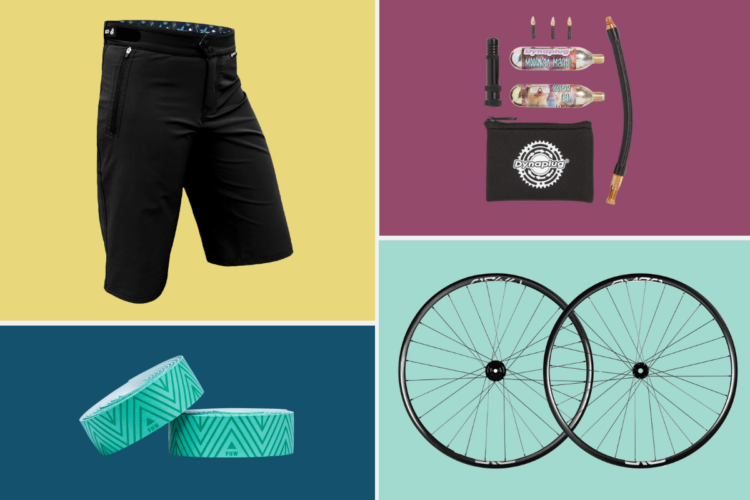Bikepacking and riding long distances gives you plenty of time to ponder questions like, how could anyone have possibly bikepacked before GPS units and smartphones were invented? I asked a couple folks who were there about those dark, early days and as it turns out, GPS isn’t the only thing that makes bikepacking so fun and accessible today.

Custom bags and a better rack options
Thirteen years ago I went on an off-road, hut-to-hut bike trip, and the organizers suggested packing most of our overnight gear in a backpack to wear on our backs. At that time, if anyone had experience with this type of trip it was from touring, where bike trailers were a legitimate choice for hauling gear. No, don’t bring a trailer the organizers warned; those don’t work well when riding singletrack. So one of the guys in our group wore a full-size backpacking pack for 250+ miles of gravel road and singletrack riding.
Today there are countless bag makers crafting bespoke packs to fit any bike frame. Frame manufacturers are on board too, adding mounts for small top tube snack bags, fork cages, and the like.
“To me the best thing that has happened with bikepacking in the last like five years has been the introduction of even more [bag] options,” said Karlos Bernart in an interview earlier this year. “So racks and panniers have existed, but now there’s lightweight racks and lightweight panniers so that the people who are worried about the weight can use them. I really love all that variety in the equipment.”
Indeed, we’re seeing racks and panniers becoming popular with bikepackers again, particularly since they make it easier to run a dropper post. In this age of plenty, bikepackers can truly have their cake and eat it too, without having to sacrifice the things that make mountain bikes fun and comfortable to ride.

Smartphones
As it turns out, I’m not the only one whose thoughts wander to our bikepacking forebears and how they survived without things like GPS and smartphones. Eddie O’Dea became the first to complete the 5,900-mile-long Eastern Divide Route last year, but he got off to a rough start in Canada when he found his data plan unexpectedly maxed out.
“I started thinking, people were doing this 20 years ago without [Google maps and streaming music]. That’s how you had to do it. It’s such a great mental crutch to have streaming things.”
Of course many routes have little to no phone service, but even multi-week trips like the Tour Divide involve dipping into towns along the route to pick up supplies and make repairs. A smartphone is invaluable for finding out when the local bike shop closes and searching for tacos to go, which takes a lot of the stress out of planning, and riding too. With a smartphone in hand, there are few problems that can’t be solved. And that’s not to mention the hours of podcasts for when we just need to hear the sound of a human voice for a an hour or two.

Little doohickeys
Like bags, there’s been an explosion of cool little doohickeys that make mounting and carrying gear easier than ever. Many of these items are DIY, just as they were in the early days of bikepacking, but the difference is how much faster great ideas spread thanks to social media and the ability to order parts directly online from makers and specialty retailers.
After seeing someone running a similar setup last year, I ordered a cheap set of TT bars off Amazon and modified them to give myself an additional hand position and extra bar space for mounting a light and GPS. Today there are ready-made clamps for adding bottle mounts to any tube on your frame, little nubs you can screw into fork mounts for placing a light, and power-generating hubs that will charge your phone while you ride. We’re truly standing on the shoulders of the bikepacking giants who have found and refined solutions to pretty much any problem we might encounter along the way.
The GPS
Would bikepacking exist without the GPS? While people were certainly following multi-day, off-road routes before the GPS, it wasn’t until the early 2000s that the term bikepacking entered the lexicon, around the same time the U.S. government improved the accuracy of GPS devices for civilian use. Suddenly riders could see their (relatively) precise location on a digital map, and follow a line that someone else created. When the first Arizona Trail Race was held in 2006, Scott Morris says no one even called it bikepacking. Morris was an early adopter of GPS data for mapping off-road routes, creating TopoFusion software with his brother in 2002 because “we just wanted a program to map our own rides.”


While GPS undoubtedly makes navigation easier, the real innovation is in its ability to share routes. Previously, if you had a great route you wanted to share, you’d have to make physical copies of a map to distribute. By making routes portable and shareable, bikepacking became much more accessible and spurred the creation of new routes and races around the world.
“The first routes I mapped, like the Naked Indian route and the Death Loop, I made them by riding them,” Bernart said. “I would have to ride them then go home, and I couldn’t even draw a route. So I would literally have to write like, take the third cut to the left.”
Satellite GPS trackers like Spot and Garmin Inreach followed, making it possible for friends and fans to track races and adventures in real time. GPS has also added a level of safety to bikepacking that didn’t exist previously, allowing more riders (and their significant others) to feel comfortable heading into the woods with just a bike and a sleeping bag for days at a time.
Bikepacking tech isn’t just one thing
Getting back to my original question about what it was like to bikepack 20 years ago, I guess I shouldn’t be surprised that it isn’t just one thing that’s changed. As it turns out, our world has changed, and the way we experience it has too. Fortunately now it’s easier than ever to explore every square inch by bike.
















